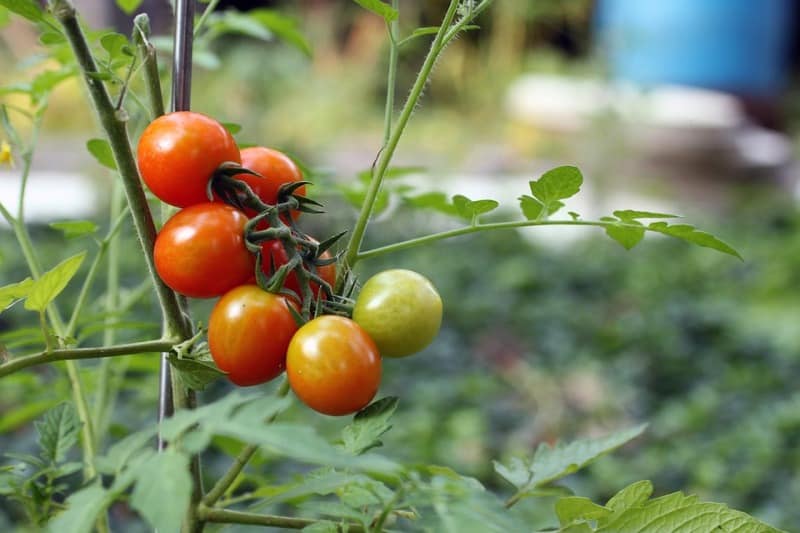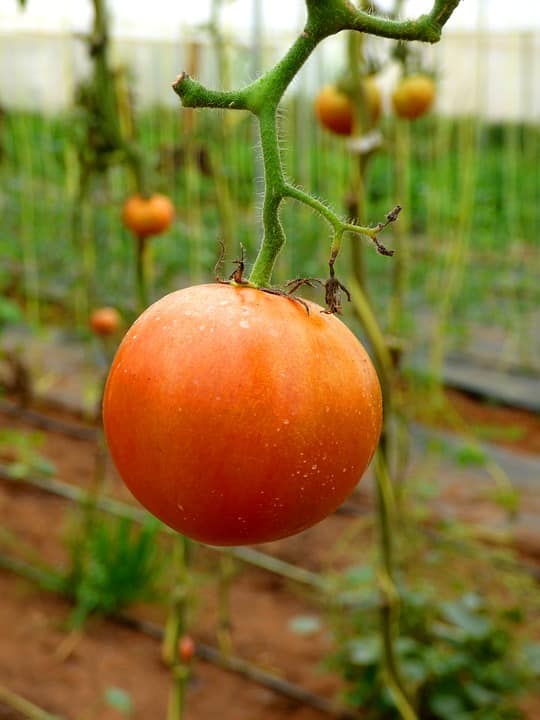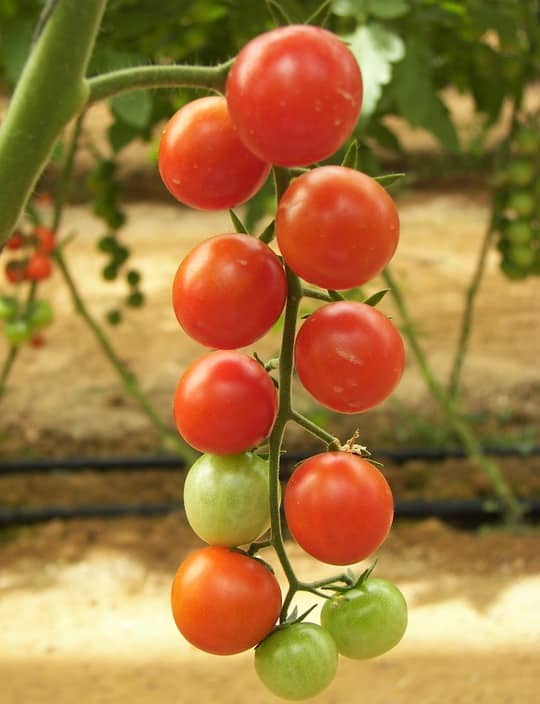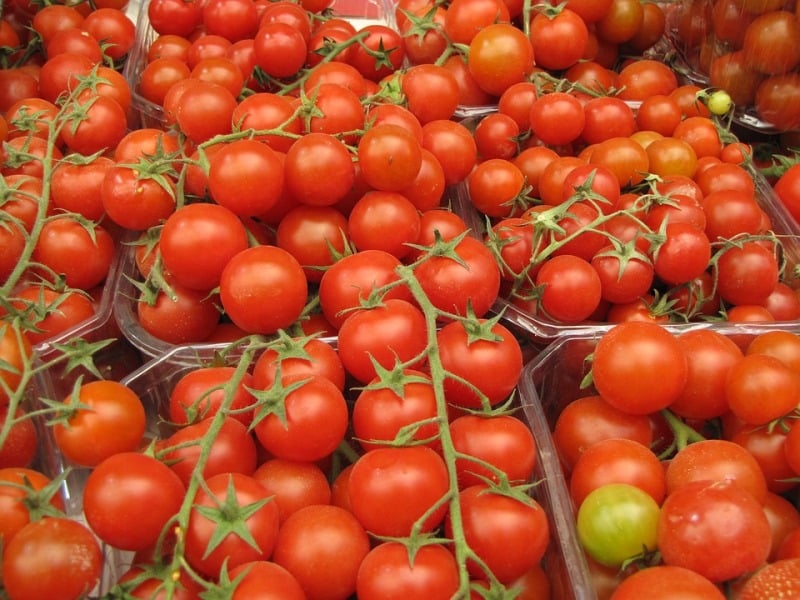A step by step guide for tomato farming in Haryana
Today, we explain tomato farming in Haryana, production details along with cultivation practices for maximum profit.
The tomato is botanically known as Lycopersicum esculentum belongs to the Solanacae family.
The tomato is a perennial plant but generally grown as an annual plant. It is reported that the tomato plant can reach up to three meters. Previously tomatoes were grown during the favorable season, but now a day’s tomatoes are grown around the year. Because of tomatoes economic importance, the area under cultivation is increasing every year.
Tomato farming is a warm-season crop, it requires a warm and cool climate. A tomato requires different climatic range for seed germination, seedling growth, flower and fruit set, and fruit quality.

Some information about tomato farming in Haryana:
Let us the below points are the information about tomato cultivation in Haryana;
- Haryana state is one of the states in northern India. Haryana is on 11th positions in tomato production and produces approximately 3.11% of the total production of India.
- Haryana state contributes approximately 4% of the total area and production of tomato in the country.
- Tomato from Haryana mostly covers markets of Delhi NCR, Rajasthan, and other nearby states.
- Haryana’s average area is approximately 29000 ha with an average tomato yield of 20 – 23 t/ha.
- Karnal district of Haryana alone produces approximately 43587 tons of tomato from an area of 2515 ha. It is at 4th position in tomato production in the state and contributes approximately 8% of the total area under cultivation and produces around 6.77% of the total production of the state. In the state, around 1% of tomato production comes from protected cultivation and the yield of tomato under protected cultivation is very high as compared to open field. In the state, Bhiwani, Karnal, and Panipat have the highest area under protected tomato cultivation. Mewat is the highest tomato producing district with the highest area under tomato cultivation.
- The average yield of tomato in Haryana changes from 24.47 t/ha in 2014-15 to 20.13 t/ha in 2016-17.
- As per the National Horticulture Board (NHB), recommended tomato varieties for the protected cultivation in Haryana are;
- Tomato: By Syngenta – Himsona, Him Shekhalnsona, 34774, etc.
- Cherry tomato – By Monsanto – Olleh, Raisy, etc.
Different tomato varieties are grown in Haryana:
Let us discuss different tomato varieties grown in Haryana;
- Hisar Lalima
- HS-110
- Pusa Sheetal
- Pusa Gaurav
- Pusa Uphar
- Pusa Hybrid-2
- Arka Ananya
- Arka Abhijit
- Arka Saurabh
- HS-101
- HS-102
- Hisar Lalit
- Hisar Arun
- Kashi
- Anupam
- Pusa-120
- Pusa Ruby
- Arka Abha
Soil requirement for growing tomatoes:
The suitable soil for growing tomatoes in Haryana is sandy loam. Soil depth 15 to 20cm proves to be good for healthy tomato crop. Months of July to September month are best for summer tomato in Haryana state in which monsoon rainfall is received.
You may be interested in the Bitter Gourd Project Report, Cultivation Cost, Profit.
The climatic requirement for tomato production:
In India, tomato is mostly grown during two seasons across the country June to September (Kharif) and October to February (rabi) whereas in few regions it is formed throughout the year except 1 or 2 months based on the climatic conditions.

Rainfall suitability for growing tomatoes:
Tomato crop can be grown in tropical and subtropical regions, with an annual rainfall of 650-1500 mm. Very high rainfall during its development is harmful. The suitable rainfall for tomato crop in Haryana as reported in researches is 650 – 1305 mm and moderately suitable rainfall is 346.4-650 mm. Thus, the state was categorized in the highly and moderately suitable zone as per these rainfall limits.
Temperature suitability for tomato plantation:
Extreme temperature requirements in summers in Haryana can adversely affect the tomato vegetable crop. Therefore suitability was identified on maximum temperature and minimum temperature for every month (July to September) and the final suitability map was prepared by combining all three months suitability maps.
You may also be interested in Growing Curry Leaves from Cuttings, Seeds.
Out of the 21 districts in Haryana, highly appropriate zone covered Ambala and some parts of Yamunanagar and Kurukshetra districts. Five districts such as Panchkula, Yamunanagar, Kurukshetra, Karnal, and Gurgaon were predominantly suitable districts for tomato farming in Haryana due to good soil moisture, water availability and suitable weather. Tomato cultivation was moderately appropriate in the eight districts viz. Kaithal, Jind, Panipat, Fatehabad, Hisar, Faridabad, Palwal, and Mewat. Districts viz. Bhiwani, Rohtak, Jhajjar, Rewari, Mahendragarh, and Sirsa were less suitable for tomato cultivation however; some parts in these districts fall under moderately suitable.

You may also check the Biogas Production Process in India.
Choice of seeds for tomato cultivation in Haryana:
After Tomato seed production, diseased, broken seeds are discarded. The seeds for sowing must be free from inert matter. Early germinating, bold, uniform in shape and size, seeds are preferred for sowing. Hybrid seeds from F1 generation are useful for sowing as it gives early and high yield uniform fruity, resistant to adverse environmental conditions.
Tomato seed rate and sowing process:
Tomato is normally cultivated by transplanting seedlings on ridges and furrows. At the instance of transplanting, seedlings are harder by exposing to open weather or by withholding irrigation. A seed rate of 400 to 500g/ha is necessary. Seeds are treated with Thiram @ 3g/kg of seed to care for from seed born diseases.
Transplanting for tomatoes
- The transplanting is done in small flatbeds or in shallow furrow depending upon the availability of irrigation requirement.
- In heavy soil, it is usually transplanted on ridges and during the rains, it is advantageous to plant the seedlings on ridges.
- For indeterminate varieties or hybrids, the seedlings have to be staked using bamboo sticks of 2-meter length or planted in a broad ridge of 90 cm width and 15 cm height. The tomato seedlings are planted in the furrows at a spacing of 30 cm and the plant is allowed to spread on the broad ridge.
When and How to harvest tomatoes:

Tomato plant starts yielding by 70days after transplantation. Tomato harvesting is done depending upon purpose like for fresh market, long-distance transport, etc. Mature green color tomatoes, 1/4th fruits portion gives pink color are harvested for long-distance markets. Almost all fruits turn into pink color or red color but having firm flesh are harvested for local markets. For processing and seed extraction, fully ripe fruits with soft flesh are used.
You may also check Balcony Gardening Design for Vegetables, Flowers.